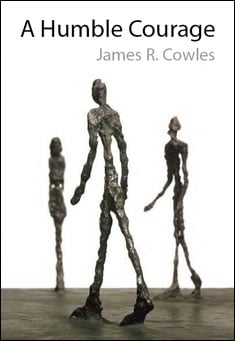In a very recessed and implicit fashion, Karl Barth's theology, as explicated in works like "Church Dogmatics", follows Soren Kierkegaard's "Stages on Life's Way". "A Humble Courage" traces the parallels between Barth's theology and Kierkegaard's philosophy.
Excerpt:
While historical generalizations are notoriously hazardous, we may say that one of the issues that precipitated the Protestant Reformation was the role of mediation in relation to faith. Prior to the Reformation, the believer’s salvation was mediated, at least in the minds of the Reformers, by an elaborate hierarchy of priests, bishops, and popes in this world, and a no less elaborate hierarchy of confessors, saints, virgins, and martyrs in the next. The believer’s interpretation of Scripture was subject to the same mediation. The consequent Protestant antipathy vis a vis mediation did not cease with the Reformation proper, however. In the first half of the nineteenth century, the mediation of human experience through Hegel’s grand synthesis of the dialectic of history as the sweeping, grandiloquently optimistic - and supremely above all, rational - evolution of Spirit in and into the world would find its most eloquent antagonist in Kierkegaard’s emphasis on the solitude of the individual human being before God, a relation not comprehensible in the rational terms so central to Hegel’s Logic and his Philosophy of History. Almost a century after Kierkegaard, the horror of the First World War and imminence of the Second would be in large measure responsible for Karl Barth assuming the mantle of antagonist of the religious descendant of Hegelian optimism, Protestant liberalism, and, like Kierkegaard and in a manner deeply, if usually tacitly, indebted to him, utilizing a threefold schema in articulating his critique of his former religious ideology and the related cult of progress that, by the time Barth’s Epistle to the Romans was first published in 1918, lay discredited in the mud of the Marne. Barth’s and Kierkegaard’s deployment of this three-tiered schema is far too complex to enter into rigorously and exhaustively in a short paper, but may be at least suggested by examining their respective conceptions, first, of the nature and authority of Scripture, and secondly, of the nature of religious faith. Each level of their common schema corresponds to a modality of the self’s relation to God, as conceived by Kierkegaard in his Stages on Life’s Way.
Man is spirit. But what is spirit? Spirit is the self. But what is the self? The self is a relation which relates itself to its own self, or it is that in the relation ... that the relation relates itself to its own self; the self is not the relation but [consists in the fact] that the relation relates itself to its own self. Man is a synthesis of the infinite and the finite, of the temporal and the eternal, of freedom and necessity, in short it is a synthesis. A synthesis is a relation between two factors. So regarded, man is not yet a self. ... If this relation which relates itself to its own self is constituted by another, the relation doubtless is the third term, but this relation (the third term) is in turn a relation relating itself to that which constituted the whole relation.














